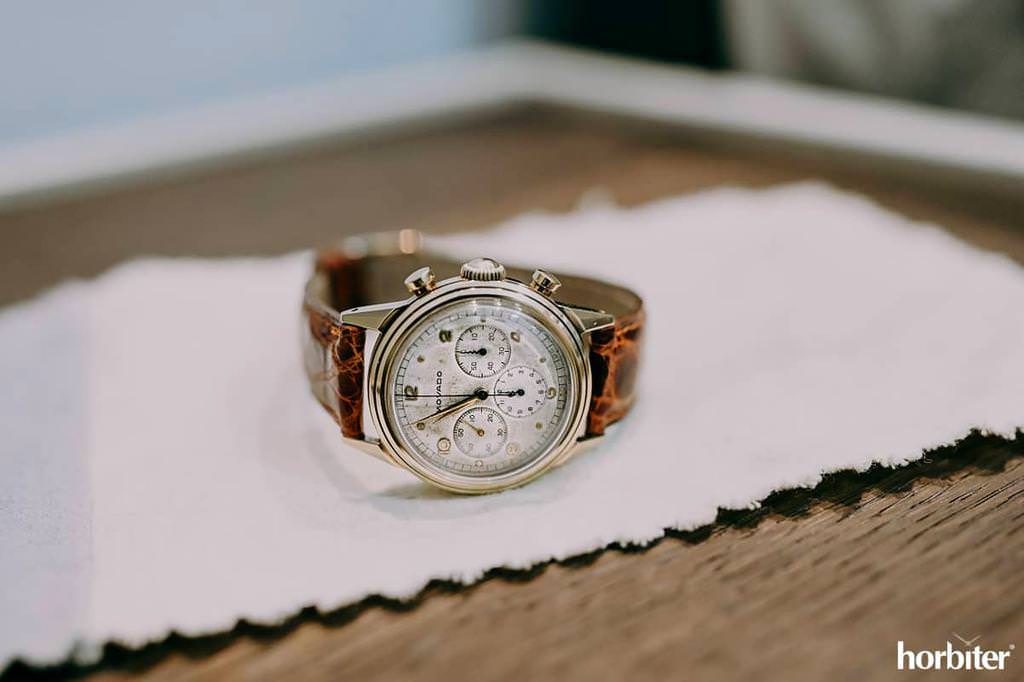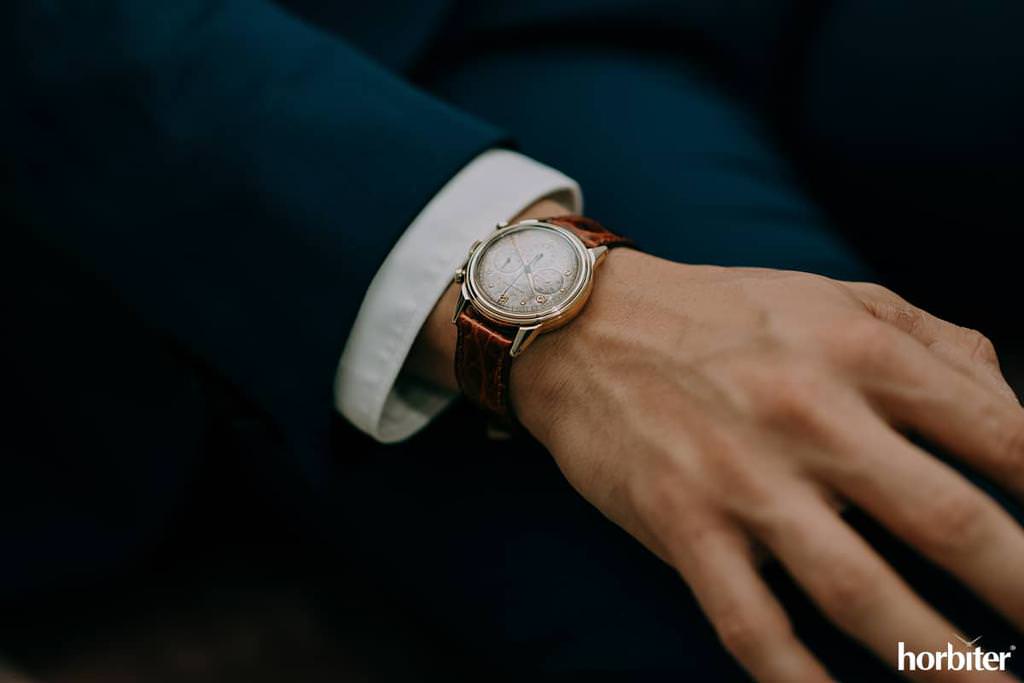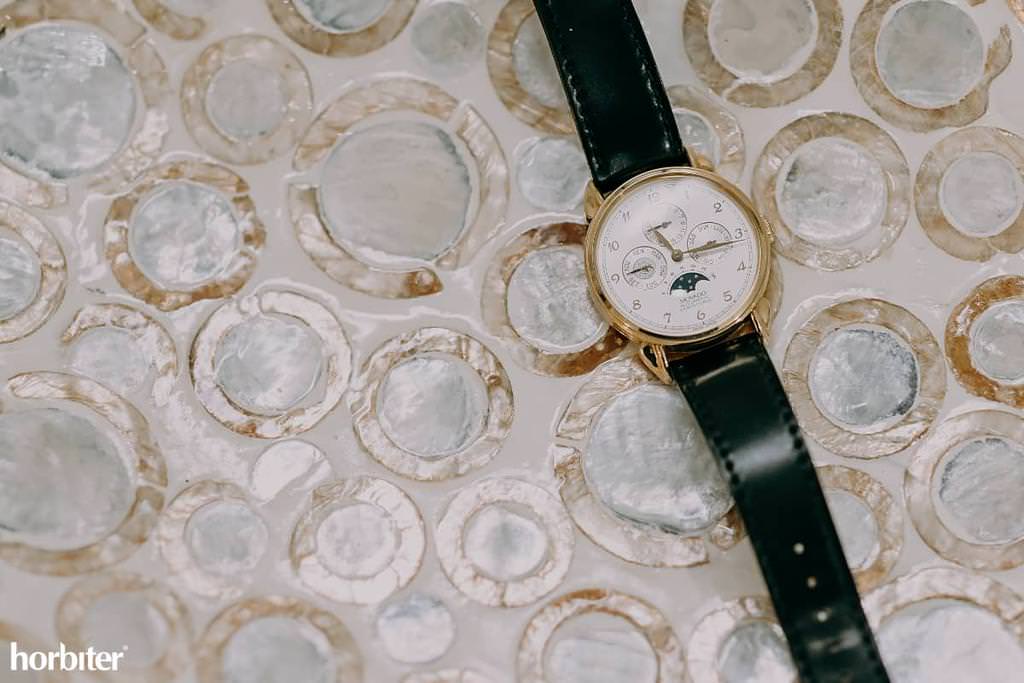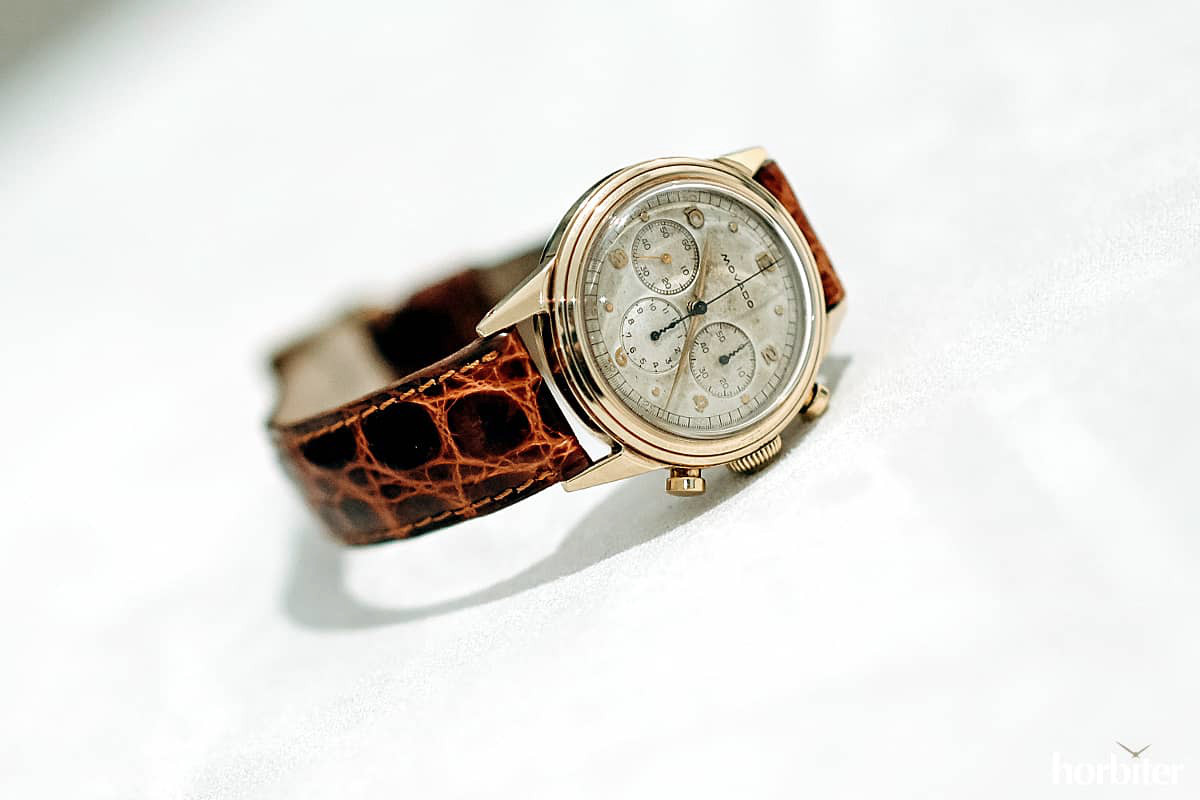Dear readers, I’m glad to welcome you to the vintage watches column on Horbiter®. To start, let me, please, introduce a brand, Movado, which is synonymous with technical prowess and sleek lines, whose pinnacle dates back to a time between the 40s and 60s. During those years, Movado prided itself with exquisite timepieces, purveyors of fine watchmaking. Luckily enough, I got myself a couple of hot pieces.
A brief history of Movado watches
Movado was founded in 1881 by Achille Ditesheim, who initially set up a small workshop in La Chaux De Fonds. After completing his apprenticeship in the small town’s watchmaking school, Achille located the workshop in a building at Rue 1er Mars 13 along with six co-workers. The small company rapidly grew to become an 80–employee company in 1897, closing up on the more renowned 100–employee LeCoultre factory.
 Ditesheim was a dynamic and sales-talented guy; he successfully increased Movado‘s production volumes and turnover. After changing multiple locations, in 1905, the brand finally based in Rue Du Parc 117, and its workforce grew up to 150 workers. After working mainly on movements’ finishing and assembly and selling components to third parties, during the early days, Ditesheim‘s company filed for plenty of patents between 1902 and 1912, mainly regarding innovative production machines and processes. With one of Ditesheim‘s five brothers joining the company, Movado strengthened its leadership as a fine mechanical movements producer. The brand could offer almost any kind of mechanical movement, and its workforce raised to 300 employees in 1948.
Ditesheim was a dynamic and sales-talented guy; he successfully increased Movado‘s production volumes and turnover. After changing multiple locations, in 1905, the brand finally based in Rue Du Parc 117, and its workforce grew up to 150 workers. After working mainly on movements’ finishing and assembly and selling components to third parties, during the early days, Ditesheim‘s company filed for plenty of patents between 1902 and 1912, mainly regarding innovative production machines and processes. With one of Ditesheim‘s five brothers joining the company, Movado strengthened its leadership as a fine mechanical movements producer. The brand could offer almost any kind of mechanical movement, and its workforce raised to 300 employees in 1948.
Some landmark Movado watches
Since 1912 Movado has produced countless chronographs with 30-minute counters and coaxial-to-the-crown pushers; reliable sources affirm Movado was the first brand ever to conceive such a layout while supplying its fine mechanical movements to other watch brands, too, as proved by the Movado–powered Ralco watch introduced in 1921. Starting from 1920, Movado offered nearly 1000 models in its catalog and included personalities like Rodolfo Valentino among its top-customers; he bought, for example, a Movado pocket watch; another iconic piece from the brand is the Movado Ermeto travel clock. In 1938 the brand marketed the first mass-produced chronograph called Le Chronographe cal. M90; production stopped in 1965, whereas another iconic timepiece, the first-series Movado M95, rolled out the production line between 1946 and 1959.
 The caliber, based on a Frederique Piguet sourced movement, was a 12-line modular chronograph featuring a horizontal clutch with a column wheel. Among its pros, it was easy to service. The chronograph function activation is uncommon since you start it by pushing the button at four and zero-reset via the push-piece placed at two. Despite the modular chronograph layout, which makes it easier to make, on paper, the truth is that it required countless tests to make it as reliable as expected, at least by reading what Nicola dè Toma, a respected watchmaking expert who passed away in 2013, once stated: “The drivetrain from the return to the minute-counter wheel is not direct, but includes an additional pinion in between; the former adds, therefore, friction in a gear train whose low power drives the central wheel of the chronograph hand too; this is affecting the balance wheel’s amplitude while the minute-counter hand is jumping to the following elpased minute, thus further impacting the chronometric precision; it’s even more so when the timing function is in place for a long time. Additionally, in an attempt not to affect the amplitude mentioned above any greater, the “clearance” between the three gears had to be increased, thus affecting the motion of the elapsed-minute hand, and readability, since the minute totalizer is split into sixty parts, instead of thirty.”
The caliber, based on a Frederique Piguet sourced movement, was a 12-line modular chronograph featuring a horizontal clutch with a column wheel. Among its pros, it was easy to service. The chronograph function activation is uncommon since you start it by pushing the button at four and zero-reset via the push-piece placed at two. Despite the modular chronograph layout, which makes it easier to make, on paper, the truth is that it required countless tests to make it as reliable as expected, at least by reading what Nicola dè Toma, a respected watchmaking expert who passed away in 2013, once stated: “The drivetrain from the return to the minute-counter wheel is not direct, but includes an additional pinion in between; the former adds, therefore, friction in a gear train whose low power drives the central wheel of the chronograph hand too; this is affecting the balance wheel’s amplitude while the minute-counter hand is jumping to the following elpased minute, thus further impacting the chronometric precision; it’s even more so when the timing function is in place for a long time. Additionally, in an attempt not to affect the amplitude mentioned above any greater, the “clearance” between the three gears had to be increased, thus affecting the motion of the elapsed-minute hand, and readability, since the minute totalizer is split into sixty parts, instead of thirty.”
 The above proves what kind of a challenge was to build a modular chronograph back then. As far as my choice concerns, I took a Movado caliber M95 model instead of a Movado Caliber M90 since the former adds the hour-counter, that is missing on the M90 instead.
The above proves what kind of a challenge was to build a modular chronograph back then. As far as my choice concerns, I took a Movado caliber M95 model instead of a Movado Caliber M90 since the former adds the hour-counter, that is missing on the M90 instead.
The Movado watch I was looking for: the Movado M95
I finally bought a Movado reference 49038, where the number 4 identifies the case material (14 karats yellow gold). As far as my research concerns, the only piece I had found so far was auctioned in 2002 by Christie’s. This reference offered plenty of case and dial options; the M95 came with many types of hands (dauphine, radio-filled baton indexes or baton with no luminescent material), indices (baton, cylindrical, Breguet, Arabic numerals and cylindrical) and dial, offered in at least five variants (spiral telemetry scale, 1000 meter and 900 meters based tachymeter scale, no scale but with a 60-second chronometric measurement and, finally, with telemetry scale and tachometer).
 The one I own, pictured here, was produced between 1947 and 1953, comes in excellent condition, and belongs to a friend and vintage watch collector. I love the engineering of this Movado as much as I appreciate case shape and craftsmanship. Also, the movement comes standard with a dust protector cap, which guarantees water resistance too. In the early 1950s, Movado designed and built a proprietary waterproof system called Sub–Sea. To prove its effectiveness, the brand organized a double-crossing of the Atlantic in 1954. They attached a watch with a Sub–Sea case to the hull of a transatlantic. A jury certified the timepiece was correctly working at the end of the test.
The one I own, pictured here, was produced between 1947 and 1953, comes in excellent condition, and belongs to a friend and vintage watch collector. I love the engineering of this Movado as much as I appreciate case shape and craftsmanship. Also, the movement comes standard with a dust protector cap, which guarantees water resistance too. In the early 1950s, Movado designed and built a proprietary waterproof system called Sub–Sea. To prove its effectiveness, the brand organized a double-crossing of the Atlantic in 1954. They attached a watch with a Sub–Sea case to the hull of a transatlantic. A jury certified the timepiece was correctly working at the end of the test.
The case of my Movado M95
The 34,8mm case was crafted by Francois Borgel, who also supplied Mido and Patek (reference 1463) at the time. It has a glossy finish except for the lugs’ inner surfaces, which are vertically knurled. The case’s serial number comes engraved on both the lugs and the case back. Multiple bracelet options were also available since the timepiece could either come with a strap and buckle or a rice bracelet paired with a personalized clasp with the Movado logo. Here are the listed prices, in dollars, in 1968: the steel option cost 160 dollars, on a strap, and 175 on a bracelet. Finally, the 14–karat gold option retailed for dollars 335.
Opinions on the Movado M95
I think it is an extremely proportioned timepiece that flawlessly embodies the 1950s’ design, where an elegant case shape was an essential requirement; moreover, the lugs’ design is relatively uncommon considering the class of products and price. Such a beautiful style comes with original technical specifications. Like other vintage Movado watch lovers, I also appreciate how much the brand invested in searching for original technical solutions.
 The Movado M95 is not the only Movado I own; I also took a limited edition Movado Perpetual 1881. Finally, the Movado M95‘s production volumes by year and series: 11,200 pieces for the first series, 250 for the second series, and 2,750 for the third and last series.
The Movado M95 is not the only Movado I own; I also took a limited edition Movado Perpetual 1881. Finally, the Movado M95‘s production volumes by year and series: 11,200 pieces for the first series, 250 for the second series, and 2,750 for the third and last series.
(Photo credit: Enrico de Rose for Horbiter®)
Fabrizio Sammarro @Horbiter®


Hello, I truly enjoyed your article on the vintage Movado M95, I was hoping if you can please help me out, I believe I have a similar watch as yours. My father was a vintage watch collector and he left me his collection